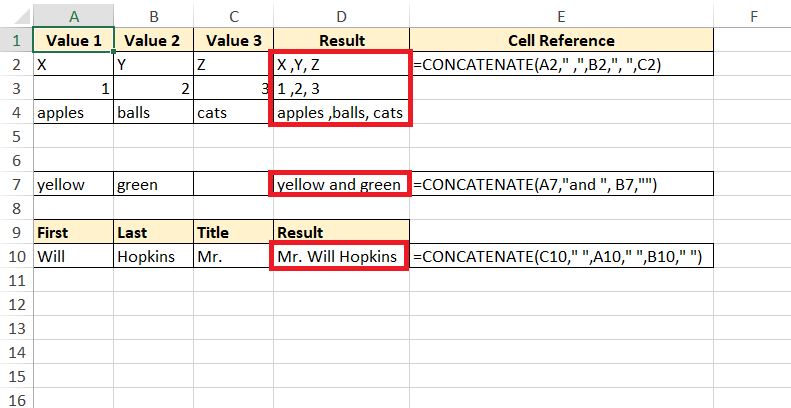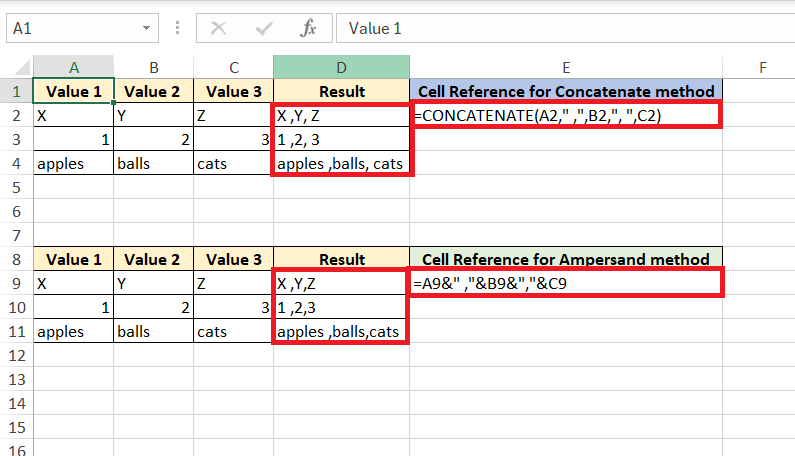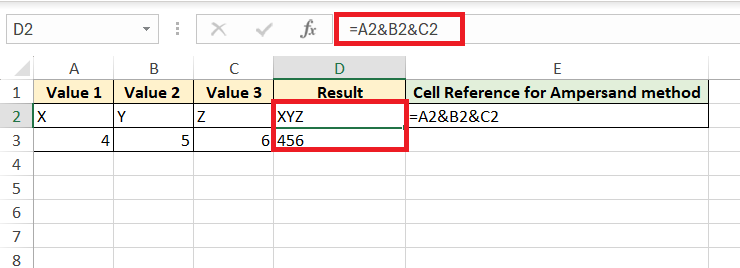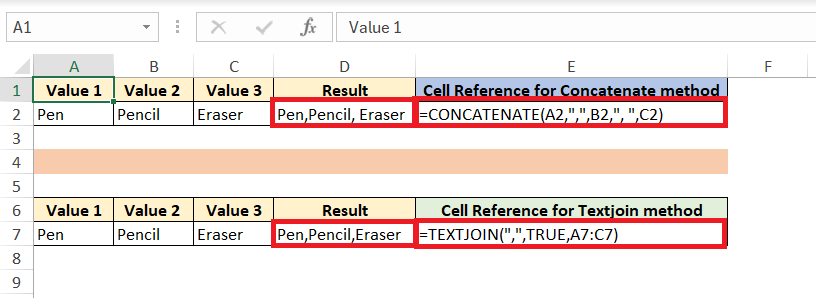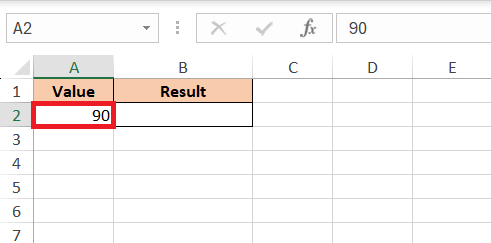Concatenating data in Microsoft Excel is a powerful technique that allows users to merge text from multiple cells into one. This skill is essential for organizing and managing data effectively, whether you’re compiling lists, creating detailed reports, or preparing data for analysis. In this article, we will explore the various methods available in Excel to concatenate data, including the CONCATENATE function, the ampersand (&) operator, and the more recent TEXTJOIN function. By mastering these techniques, you can enhance your data manipulation capabilities and streamline your workflow in Excel.
Key Takeaways:
- Excel offers multiple methods for concatenation: You can use functions like CONCATENATE, CONCAT, and TEXTJOIN, or the ampersand (&) operator to join data.
- Functions vs. Operators: Functions provide flexibility with delimiters and handling empty cells, whereas the ampersand operator offers simplicity and speed.
- Advanced Concatenation: TEXTJOIN allows you to specify delimiters and skip empty cells, providing more control over your data merging.
- Automation and Efficiency: Use autofill to quickly replicate concatenation formulas across multiple cells, saving time and effort.
- Best Practices: Ensure data integrity by cleaning and standardizing data before concatenation, and plan for future updates with dynamic named ranges and careful documentation.
Table of Contents
Introduction to Combining Data in Excel
The Power of Concatenation
Diving into Excel, you’ll find a wealth of features designed to handle data like a pro. Concatenation is one such gem—a delightful way to merge and harmonize various pieces of information. Imagine having the ability to effortlessly stitch together names, dates, addresses, and more, just like threading pearls into a strand. Concatenation in Excel does just that, transforming separate data elements into a cohesive whole.
Excel Functions vs. Operators for Data Joining
When it comes to data joining in Excel, you’ve got a choice between two paths: using functions like CONCATENATE, CONCAT, or TEXTJOIN, or the straightforward ampersand (&) operator. Functions come with bells and whistles—options for delimiters and handling empty cells—while the ampersand is all about simplicity and speed. Think of it this way: functions are your multitool, versatile for various tasks, whereas the ampersand is your trusty pocket knife—quick and easy for a clean cut.
Master the Basics of Concatenation
Getting Started with the CONCATENATE Function
Embarking on the CONCATENATE function is a smooth ride—it’s intuitive and pretty straight to the point.
STEP 1: Select the cell where you want the combined data to appear.
STEP 2: Enter the function followed by the cells or text elements you desire to merge. For instance, =CONCATENATE(A1, B1, C1) would weave the contents of cells A2, B2, and C2 into a single cell.
Want to blend a first and last name with a space in between? Just add a text string like a space enclosed in quotes within the parentheses. It’s a breeze!
Joining Cells Using the Ampersand (&) Operator
Ready for a shortcut to concatenate in Excel? Enter the ampersand (&) operator—a bridge connecting data without the traffic of extra functions.
Here’s how they do it:
STEP 1: Select the cell for the grand reveal of combined data, type ‘=’ to kick things off.
STEP 2: Click on the first cell, and simply insert ‘&’ between each cell reference.
For added clarity, like a comma or a space, you can park them in quotation marks right in the mix. It’s like saying, “Hey Excel, squish these together, and make it snappy!” And poof, watch as your data unites with the ease of a single keystroke.
Advanced Techniques for Data Combination
Dive into CONCAT and TEXTJOIN Functions
When you’re ready to take your concatenation skills to the next level, the CONCAT and TEXTJOIN functions are your allies. They came into the spotlight in the later Excel versions, infusing more power and precision into your data combination quests. CONCAT is the evolved version of CONCATENATE—sleek and functional, it bids farewell to the 30-item limit, embracing ranges with open arms
TEXTJOIN steps it up further, bestowing the gift of specifying a delimiter to neatly space out your combined data and intelligently skip over any empty cells if you so choose. For those with Excel 2019 or newer, TEXTJOIN is your go-to for finesse and flexibility in data merging.
Automation and Efficiency
How to Autofill Concatenated Columns
Say goodbye to tedious manual entry and embrace the magic of autofill for concatenated columns.
STEP 1: Once you’ve crafted the perfect formula to blend your data in the top cell.
STEP 2: All you need to do is grab that tiny fill handle—a small square in your cell’s bottom-right corner—and drag it down. Excel will sprinkle that concatenation formula fairy dust down the column, replicating the pattern and filling cells faster than you can say “automate”.
And if dragging isn’t your style, a swift double-click on the fill handle will do the trick, cascading your formula down adjacent cells until it meets an empty space. It’s automation at its best, a true time-saver!
Blending Formulas and Text within a Single Concatenation
Excel allows you to whisk together formulas and raw text strings in one delightful concoction. Let’s say you’re preparing a report and you want to include calculated results with descriptive text. Just blend the formula generating the number right alongside your text within the CONCATENATE or CONCAT function. It’s like a smoothie mix of dynamic data and static words.
This ability turns mere data into informative, reader-friendly sentences or labels. It’s a powerful way to automate descriptive text generation around your data points, adding a personal touch without losing the momentum of automation.
Assume you have a calculation in cell A2, for example:
To concatenate text with a calculation result, you can use the CONCATENATE function or the “&” operator in Excel:
- Using CONCATENATE function: ‘=CONCATENATE(“The result is: “, A2 + 10)’. This formula will concatenate the text “The result is: ” with the result of the calculation in A2 plus 10.
- Using the “&” operator: ‘=”The result is: ” & (A1 + 10)’. This formula achieves the same result as CONCATENATE but uses the “&” operator for concatenation.
Best Practices for Excel Data Concatenation
Ensuring Data Integrity and Consistency
Preserving the accuracy and uniformity of your data is paramount when you concatenate. Start by scrubbing your data clean—align text cases, standardize date formats, and eliminate pesky extra spaces. Craft your CONCATENATE or TEXTJOIN formulas with care, ensuring each cell reference is correct and each separator is deliberately placed. Consistent structuring of data and vigilant proofreading are your paladins guarding against the chaos of inconsistency. When Excel mirrors the precision you expect, confidence in your merged data soars.
Strategically Planning for Maintenance and Updates
Ever mindful of the road ahead, strategic planning is key when it comes to maintaining and updating your concatenated data. Anticipate changes by using dynamic named ranges, TABLE functions, and relative references to ensure your formulas adapt gracefully. Document your process and formulas to keep future you—or anyone else who inherits the spreadsheet—in the loop. Set the foundations right, and when the time for updates comes, it’ll be a smooth transition rather than a scramble.
Immersing Deeper into Concatenate Applications
Creative Uses of Concatenation in Real-world Scenarios
Excel’s CONCATENATE function isn’t just about pushing pixels on your screen; it brings real-world data to life. Consider a marketing guru merging customer data for personalized emails, or a project manager knitting together task details to streamline updates. From generating quick reports to crafting unique identifiers for a database, the applications are as varied as they are invaluable. It’s creativity with a practical twist, turning mundane data into powerful, actionable insights.
Concatenation as a Tool for Data Analysis
In the realm of data analysis, concatenation is like the secret sauce that amplifies the flavor of your findings. It swiftly bridges gaps in datasets, teases out relationships between variables and crystallizes composite metrics. Picture constructing compound keys for database joins or fashioning labels for visual analytics—concatenation stands behind these like a silent sentinel. It’s not just about sticking data together; it’s about crafting a narrative that drives decisions home.
FAQs
How do I use CONCATENATE in Excel?
To use CONCATENATE in Excel, select an empty cell for your combined text, then type =CONCATENATE(text1, [text2], …), and replace text1, text2, etc., with the cells or text you’d like to join. Hit ‘Enter’, and voilà, your data is merged neatly in the selected cell.
What is Excel’s fastest method to concatenate two strings?
Excel’s fastest method to concatenate two strings is by using the ampersand (&) operator. It’s concise, efficient, and has no string limit, making it a superior choice for speed and simplicity over the CONCATENATE function.
How do you combine data using CONCAT without losing cell formatting?
To combine data using CONCAT without losing formatting, use the TEXT function inside CONCAT to specify the formatting for numbers, like so: =CONCAT(TEXT(Value, "Format Code"), ...). This preserves the original format.
Can CONCATENATE be used dynamically with arrays in Excel?
No, CONCATENATE cannot be used dynamically with arrays in Excel. Use CONCAT or TEXTJOIN instead for array support, allowing for dynamic concatenation without individually referencing each cell.
What are alternatives to CONCATENATE when dealing with complex datasets?
For complex datasets, TEXTJOIN and CONCAT are great alternatives to CONCATENATE. TEXTJOIN can handle delimiters and ignore empty cells, while CONCAT supports a wider range of data without manual cell references.
John Michaloudis is a former accountant and finance analyst at General Electric, a Microsoft MVP since 2020, an Amazon #1 bestselling author of 4 Microsoft Excel books and teacher of Microsoft Excel & Office over at his flagship MyExcelOnline Academy Online Course.

